
Mandrake is an unassuming little root with a formidable reputation. It is considered one of the most mysterious and potent of all magickal herbs.
Mandrake was probably first adopted by magicians because of its psychoactive properties and its occasional resemblance to the human body. It is still used in countless magickal spells and charms. This article will help you sidestep the hazards of Mandrake and get in touch with this amazing plant.
There are (at least) two distinct plants that produce roots called Mandrake, so we’ll consider them each separately. (The ritual uses and correspondences will be similar for both.) All Mandrakes are potentially lethal and should never be used for self-medication.
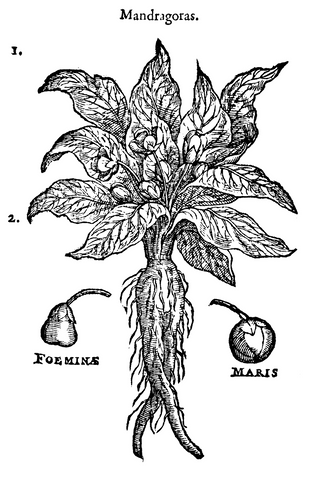
European Mandrake comes from several species of the genus Mandragora, a member of the nightshade family. Mandragora grows in the Mediterranean region, stretching eastward into parts of China. This is the Mandrake spoken about in European manuscripts. It has a single cluster of ovate leaves, almost no stem, and a long, thick root. The root contains poisonous alkaloids, particularly atropine. Mandrake was used in magickal rituals, and also in early Chinese and European medicine as a pain reliever and sedative.

American Mandrake (Podophyllum peltatum) grows in swampy areas in the northeastern United States and parts of southern Canada. It is also called Mayapple or Wild Mandrake. American Mandrake has a skinny brown root that does somewhat resemble the fatter European Mandrake with its collection of “arms” and “legs.”
American Mandrake has a broad palmate leaf attached to a long stem. The shape of the plant gave rise to another nickname “Witch’s Umbrella.” It was said—perhaps not always incorrectly—that witches harvested the plant to poison their enemies.
Every part of the American Mandrake is poisonous: The leaves, the stems, the roots, the seeds, and the unripe fruit. (The seeded ripe fruit may be eaten in small amounts. It tastes like apple—so maybe just eat an apple?) Native Americans, over time, developed some herbal remedies using American Mandrake. A powerful cytotoxin (cell-killer), American Mandrake extract has even found its uses in modern pharmaceutical industry. It is used in topical treatments for genital warts, and some anti-cancer drugs.
English Mandrake (or “false Mandrake”) is another name for White Briony (Brionia alba). Briony is an invasive vine related to the Cucumber. Besides also having large leaves and also being poisonous when ingested, Briony doesn’t bear much resemblance to other Mandrakes. Nevertheless, some writers (including Eliphas Levi) consider it alongside Mandragora.
Mandrake for sale
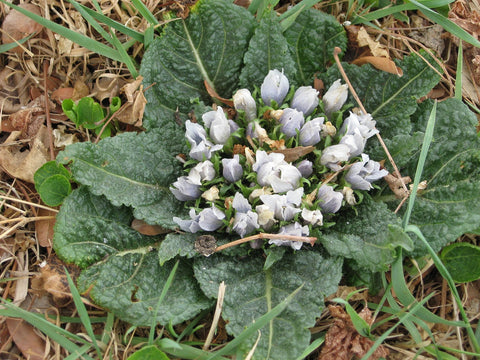
Whole Mandragora is a rare commodity and there is no commercial source. They are solitary, slow-growing plants that yield a single root. We’ve seen Mandrake roots listed for hundreds, even thousands of dollars on eBay, usually shipping from Israel or Greece.
Purchasing these is not recommended, as you never know how it’s been harvested (or unfortunately, what plant you’re really getting). The price of Mandrake is so high that there is a real temptation for online sellers to export fakes.
One option is to buy seeds online and try to cultivate it yourself. Although it is native to the Mediterranean, Mandragora can be grown at home in warm-weather conditions. The plants take 2-3 years to mature and must be regularly re-potted and protected from freezing or rotting. (It seems like a pain in the butt to this brown-thumbed Witch, but some people indeed go to great lengths for their craft!) Alchemy Works has excellent detailed instructions on germinating Mandrake. And occasionally, preserved homegrown Mandrake roots for sale.
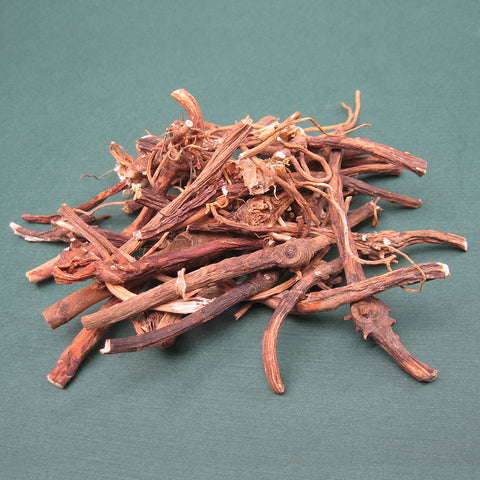
American Mandrake is available in many occult shops. (Although some won’t stock it for fear of people being dumbasses and poisoning themselves.) It is a wildcrafted product available in whole, cut and sifted, or powdered form. American Mandrake may be substituted for European (and indeed may be preferable for practitioners of American folk magick).
Mandrake essential oils and perfume oils are also available. Mandrake smells like woods and wet dirt. Occasionally, a perfumier will boast it as a base note in a concoction from the “lusty and dangerous” genre of perfumery.
Extracts of Mandrake (in glycerin or alcohol) have been spotted on the supplement market. These products are basically unregulated, and it is impossible to know their ingredients, toxicity, and proper dosage. We don’t recommend ingesting these potions or using them in your ritual formulas. Also use care with Mandrake-containing ointments purchased off the internet. With all due respect to Etsy soap-makers, few of them are chemists or doctors.
Magickal uses of mandrake
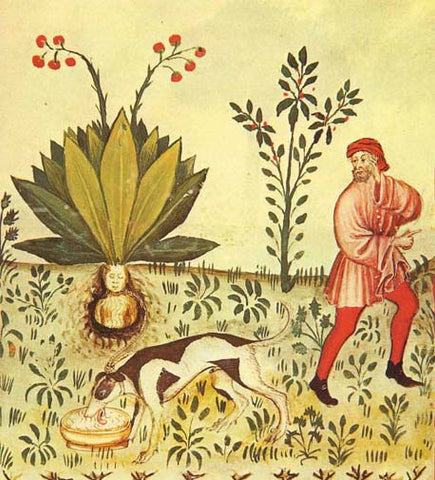
Mandrake’s curious shape meant from the beginning, that its destiny would be entwined with humans’. Few plants are as rich in superstition and magickal lore.
Literary references to Mandrake stretch back to 1st century AD, and possibly to Old Testament times. Mandrake grows underground and could only be harvested with great care. The branched root was thought to be a human form. It utters enraged screams when dug up, killing or damning the hapless forager.
Occult literature is full of instructions for extracting Mandrake roots in relative safety. Josephus of Jerusalem (circa 36-100 AD) gives the following directions:
A furrow must be dug around the root until its lower part is exposed, then a dog is tied to it, after which the person tying the dog must get away. The dog then endeavours to follow him, and so easily pulls up the root, but dies suddenly instead of his master. After this, the root can be handled without fear.
Medieval and Renaissance text devote pages upon pages to the lore of Mandrake. The plant was thought to come in male and female varieties. It is linked to the idea of the Homonculus, or miniature human, as described by Paracelsus.
Once sealed in a bottle, the Homonculus becomes a kind of servant or representation of the magician’s own self. The Mandrake root would be carefully cleaned, preserved, and “fed” to become a catalyst or vessel for magick and spirit contact. Alternatively, the Mandrake was carried as a talisman. A properly collected and prepared Mandrake was one of the rarest objects in any magician’s cabinet.
Writers of the past were also familiar with Mandrakes hallucinatory and hypnotic effects. Mandrake, along with Belladonna and Henbane, was one of the favorite herbs in recipes for the notorious Witch’s salve known as flying ointment.
Besides protection and magickal power, Mandrake is associated with fertility magick. In the book of Genesis (30:14-22), Rachel barters with her sister Leah for mandrakes so that she might conceive a child. Mandrakes are also mentioned in the long erotic poem Song of Songs (7:13).
“Mandrake” is the King James translation of a word more closely meaning “love-plant.” Some biblical scholars now believe that the “mandrake” of the Bible is ginseng or another plant thought to promote fertility.
The influence of scripture on American and Afro-Caribbean magick means that Mandrake is still a hearty player in the world of love and fertility charms. Its deep, woody odor somewhat resembles Patchouli. (Mandrake has all of Patchouli’s brooding earthiness, but not its outspoken skunkiness.) A Mandrake shaped like a phallus is supposed to be the best for love magick.
In Western occultism, Mandrake is known as an ancient, subtle teacher of Earth mysteries. (When packaging it, I’m sometimes taken aback by the strong, low pulse of energy it emits.) It is sacred to Hecate, Diana, and Aphrodite. (Mandrakes found near crossroads are said to be the most powerful.) Use Mandrake for protection, fertility magick, Dark Moon vision quests, and any Saturn workings.
Mandrake energy is complex, and Mandrake roots may have a will of their own. (Gardeners of Mandrake will attest that the plant has a peculiar awareness of its surroundings.) If you’re not sure what to do with your Mandrake, try meditating with the root and ask it how it wishes to be used.
Correspondences:
Mandrake is a Saturn plant, like most poisonous herbs. The elemental correspondence is Earth. (Some sources, citing Mandrake’s purgative power or damp habitat, go with Fire or Water, respectively.)
Spells and formulas with Mandrake:
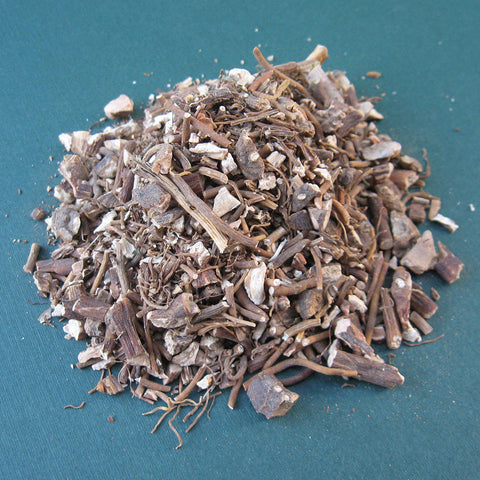
After a thousand or more years of Mandrake magick, there are more Mandrake spells than you can shake a spade at. Here’s a sampling:
Steep whole or sliced roots in a jar with alcohol for three moon cycles to make a Mandrake extract. This versatile ingredient can be used to empower many spells and rituals, or to bathe ritual tools.
To protect the home, sprinkle a Mandrake with blessed water and salt and bury it near the front door.
Mandrake’s resemblance to the human form makes it a popular ingredient in sympathetic magick. Tie American Mandrake roots together to make a doll-baby or poppet, and dress according to your intention.
Powdered Mandrake root is used to enhance fertility and prosperity charms.
Anoint a white or black candle with Mandrake oil when performing divination (white for insight on situations known to the reader, black to uncover hidden things). Apply Mandrake oil to the third eye for scrying.
Mandrake steeped in red wine is a traditional love philtre—however, we don’t recommend drinking it. Instead, tie a mandrake root to the stem of the chalice, or pour out the potion as a libation.
A bundle of Mandrake tied with a blue ribbon is a charm for revealing truth.
Mix with Dittany of Crete and Gum Arabic to make an incense for spirit manifestation. (Use only in well-ventilated areas.)
Add Mandrake to your Hecate, Crone, or Dark Moon altar.
Precautions:
In case you’re just joining us, Mandrake is toxic to humans and animals.
Don’t consume it any form. Don't smoke, drink, or chew it. It will not get you high, it will not cure cancer or genital warts or make you a badass Witch. It will just cause uncontrollable vomiting or possibly worse. It’s not even advisable to burn incenses containing Mandrake in close quarters, as some people have reported nausea from exposure to the vapor.
The safest way to use Mandrake is in dried form, as a talisman or charm. Keep away from children, pets, or others who might mistake the roots for food.
Scent Profile: Earthy, Musky, Wood, Mulch, Wet Dirt
Correspondences: Saturn, Earth
Occult properties of herbs are provided for historical interest only, and no outcome is guaranteed. Nothing on this website should be taken as medical or legal advice. Please use herbs responsibly.
Search our shop for Mandrake products, or browse more articles in the archive!
